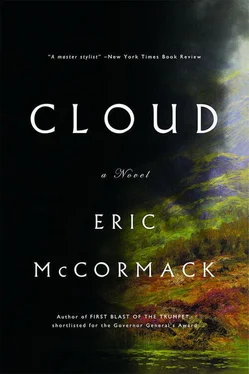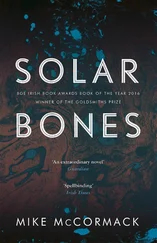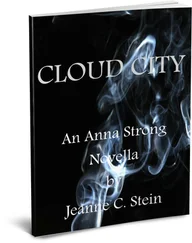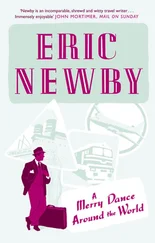That was because, several years ago, a sinkhole had appeared right in the middle of the town square. It was small to begin with, but over a period of months the hole grew so wide and so deep that it took up the entire square. Within a year all the important buildings around the square, including the town hall and the church, began toppling into it. The hole became wider still, swallowing the inner parts of the town and moving on, insatiably it seemed, to the outlying areas. Then its monstrous appetite seemed satisfied.
By that time, of course, all the inhabitants of Stroven had long abandoned the town.
To government geologists, the cause was evident: the surface of the earth had gradually been weakened in the district by centuries of mining for coal and tin. This vast sinkhole, said the geologists, was the inevitable result.
But the local inhabitants had a quite different theory. They believed the town had been gobbled up as some kind of punishment; even the etymology of its name—“strove in vain”— was a prophecy.
“SERIOUSLY?” said Miriam Galt, when I assured her I’d never heard of the Stroven sinkhole. “You’ve led a very sheltered life in that Tollgate place.” Her expression was serious as she said this.
I’d never thought of it that way, but perhaps she was right. “Then it’s possible you don’t even know about the Muirton disaster — it was just recently all over the news,” she said.
THIS MUIRTON, she informed me, was a little town only twenty-one miles east of Duncairn. It still attracted sightseers because of a horrific mine accident and its effect on many of the town’s male population.
What happened was this. One morning the mine elevator cage, full of coal miners, both men and boys, was on its way down the thousand-foot shaft for the early shift. Halfway down, the elevator cable snapped and the cage plunged on downwards. The miners immediately put into effect the traditional safety method they’d been taught for just this situation. Each of them grabbed one of the leather straps attached to the cage ceiling for the purpose, then lifted one of their legs so that most of their body weight was on the other leg. They’d barely time to take a deep breath when the cage crashed into the bottom of the mine shaft. Many of the miners survived the impact, but the legs that supported their weight were smashed to a pulp. Most had sacrificed their left leg.
Since that day Muirton had become notorious as the town of the one-legged men. Sightseers wanted to know what a place looked like that had had such bad luck. In fact it looked much the same as any other Uplands town. Except for the number of men and boys you’d see hobbling along the main street on crutches or on wooden legs.
I WAS SHOCKED to hear about Muirton, and indignant at these heartless sightseers.
“You can’t really blame them,” said Miriam. “They’d all read about it in the newspapers. It was made to sound sort of bizarre — even charming, in a way. Though for the miners and their families it was devastating.”
I agreed with that, at least.
“If you want, I can give you an example of the same kind of thing, right here in Duncairn,” she said. “What happened could almost be out of a book — except that it’s true and awful.”
Of course, I did want to hear all about it.
“Then come with me,” she said.
WE DESCENDED FROM the rock and walked a mile or so into the hills till we arrived at a deep gorge with a rushing stream in it. An old stone bridge linked the two sides of the gorge.
We walked out onto the bridge and looked down cautiously over its crumbling parapet. The stream must have been fifty feet below, with rocks jutting out of it. Miriam explained that it was from this bridge that a man named Tam Halfnight had jumped, after he’d killed his newborn baby daughter.
Since that time the shepherds had called it Tam’s Brig.
“The suicide happened a long time before I came to live here,” said Miriam. “People who knew him said Tam was a good man and didn’t mean to kill his daughter. I don’t know all the details, except that he’d something wrong with his right arm and it was in a cast. He was at home, holding the baby in his arms, and she began to slip. He tried to stop her from falling, but because of the cast he held on to her too tight and broke her neck. After that, he came up here and killed himself. Everyone thought he’d done the right thing.”
From the way she said this, I knew she agreed with them.
“I’ve heard that when they found his body, it was faceupwards on the rocks down there,” said Miriam Galt. “His back was broken and the little eye-pickers had already taken his eyes.”
I was horrified. Together we stared down into the gorge.
“They say he really loved his wife and that baby,” she said. “Isn’t it strange what love can lead to?”
I’d no answer for that.
I ADORED Miriam Galt and, at first, talking to her and listening to her talk was enough. We’d been seeing each other almost every day for more than two weeks when all of that changed. We met at the foot of the rock one day as usual. She took my hand and without a word we began walking fast up into the hills, halfrunning, in fact so out of breath we couldn’t have talked even if we’d wanted to. We reached a sheltered hollow amongst the grasses and the high heather where we’d sat on occasion before, talking. But this time we threw ourselves desperately at each other. We feasted on each other, sank into each other, tried to become one new creature.
At last, exhausted, we lay back, breathing deeply and watching the passing clouds with their impenetrable dark gulfs. When occasional streaks of gold broke through, the sun would tantalize us with glimpses of hidden treasures. Then the clouds thickened again and all the colours in the surrounding hills fell an octave. The heather and even the little moor flowers seemed almost black.
Then for a few more seconds the sun burst completely through and I turned to Miriam Galt lying there beside me. She was like some ancient priestess, her face, her whole body sheathed in molten gold.
When the clouds blotted out the sun again, she was human. At that moment I felt brave enough to tell her I loved her. I hoped she’d tell me she loved me, too.
After a while she did speak, but it wasn’t to say what I wanted so much to hear. With a sigh she invited me to come next day, for the very first time, to her home — the house amongst the windbreak of evergreens.
The rows of evergreens that offered the house protection against the weather also helped safeguard the only deciduous tree — a wide but not very tall oak which stood in the middle of a sizable front lawn. The house was of a traditional two-storey rectangular structure, built with granite blocks. On either side of the front door were two symmetrical windows with dark curtains. The second floor had three curtained windows, one of them above the door. Ivy clung to the walls around them. Engraved on the lintel of the door was the formal name of the house:
DUNCAIRN MANOR
1885
Miriam Galt, who’d walked with me from our usual meeting place at the rock, had been unusually quiet. She now opened the heavy wooden door, we went inside, and she closed it gently behind us. From the hallway, she took me into a living room with the high wainscoting of the previous century and a lot of solid-looking mahogany furniture. A stone fireplace with no fire lit in it took up almost one wall. The room seemed unchanged since the house was built.
“He’ll be in the library,” Miriam said. We approached another door which matched the wainscoting so well that it was scarcely noticeable. Just before we entered, she said softly, “Now remember, he’s not well.”
Читать дальше











